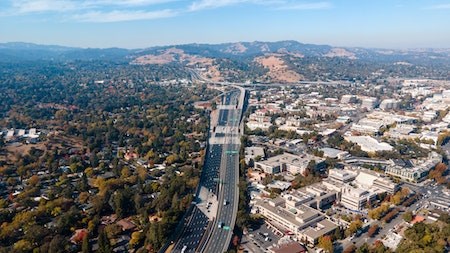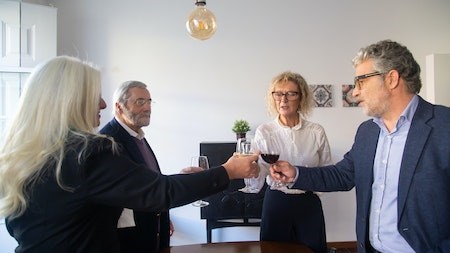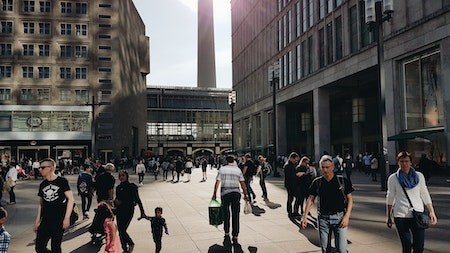Statistics issued by Ooba and Lightstone last year confirm that South Africa is experiencing increased semigration, largely to coastal areas or smaller towns, with the Western Cape experiencing the highest influx. The reasons are varied, but primarily people are moving out of major cities in favour of what is perceived as a better lifestyle, where traffic congestion, lower crime levels and a healthier lifestyle may be experienced.
WATCH : How to be a successful real estate investor.
What is gentrification?
These strong impulses stimulate the gentrification of smaller and less urbanised-based environments, which means the character of a poorer area may be elevated by improved housing and new businesses. Along with gentrification comes economic change for a historically disinvested neighbourhood via real estate investment by the new higher-income residents, who motivate change in demographics, such as improvements to education, health and retail levels.
As positive as this sounds, there is a side-kicker, that being that it may bring about feelings of resentment around inequality as working-class communities are displaced because the area has become so gentrified it is no longer affordable to live in the area.
Gentrification is one of the most complex phenomena to understand. Key to this is what is defined, as the Americans termed it, ‘white flight’, which in the South African context came about after the apartheid regime ended. Predominantly white residents created an exodus as they moved out of city centres into suburban environments, in some cases displacing lower-income groups as investors bought up nearby rural land to cater for suburbanisation.
This flow of capital from city centres into suburban environments set the stage for widespread public and private disinvestment, which in turn, unfortunately, resulted in city planners and developers deferring any new development to the more affluent suburbs. And so began the decline of some of SA’s major CBD city centres.
On the plus side, this introduced real estate opportunities for lower-income communities who wanted to be closer to economic hubs. However, they suffered challenges, not least of which was an increase in criminal activity and syndicates that easily managed to illegally occupy apartment buildings and charge higher rentals than the property was worth. Low-income residents could also not afford to attend to home maintenance, further lowering their living standards and elevating social inequalities. Furthermore, with no jobs in the city, transport costs had to be factored into their daily lives. As a result, their dream of being able to access better living conditions and improve their financial situation was shattered.
So fickle is this wheel of gentrification that today, both people and capital are flooding back into these disinvested neighbourhoods, and for many reasons. Real estate speculators are buying somewhat dilapidated properties and flipping them for large profits, especially the older, historic housing stock that appeals to new residents who appreciate landmark buildings. This revitalization, in turn, brings about improved infrastructure, especially when security around such buildings increases.
With such investment, there are changes to the character of a neighbourhood, with especially, community-run businesses emerging, particularly those that are creative and/or celebrate local culture and the cafe society. These hubs have become trendy and attract novel visitors who see the potential of revival and want to be part of the trendy society. But again, here starts the vicious cycle: as interest and investment increase, the changing nature of the neighbourhood leads to a reduced sense of belonging for the long-time, low-income residents, who may be forced to find alternative accommodation as property and rental prices increase with development.
Future expectation
Nobody can afford to ignore the impacts of gentrification, which in effect, will cause the suburbanisation of poverty, as has often been the case over the past two decades. Can South African citizens get it right this time, if only by revisiting and acknowledging the history of this cycle? This means investors and city councils should be working together to provide these long-term residents with affordable housing and a chance to benefit from the increased investment in their communities.
A lack of affordable housing due to rising property prices or rents will be perpetuated by individuals and organisations that only have a vested interest in profit, which is when councils need to step in. As the local economy begins to prosper, local municipalities should be able to spend more on rehabilitating old, run-down neighbourhoods to revitalise the affordable housing sector. It doesn’t have to be a case of two cities, one of the wealthy and one of the poor, nor should these real estate endeavours allow long-term inhabitants to become a minority in their home area as the more affluent move in. In fact, councils should be giving existing residents a voice and a platform around the planning of redevelopment projects or at least providing alternative housing solutions.
Gentrification has the potential to be an essential catalyst in providing all residents, affluent and low-income, with a safe environment in which to raise a family, in which to experience a better quality of life, and to lessen socioeconomic disparity. However, suppose the same archaic gentrification model is allowed to progress without restriction or legislative protection for low-income residents. In that case all that is being achieved is the perpetuation of the cycle of poverty, and that, quite honestly, is unacceptable.
Writer : Kerry Dimmer




